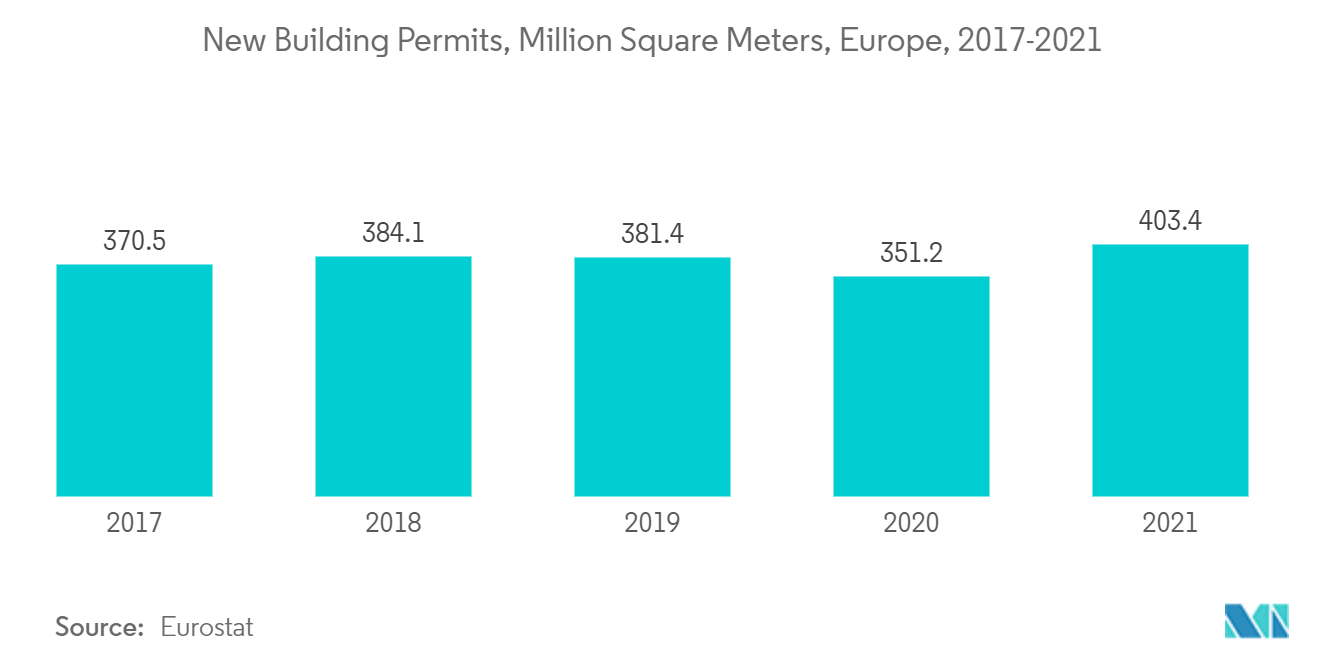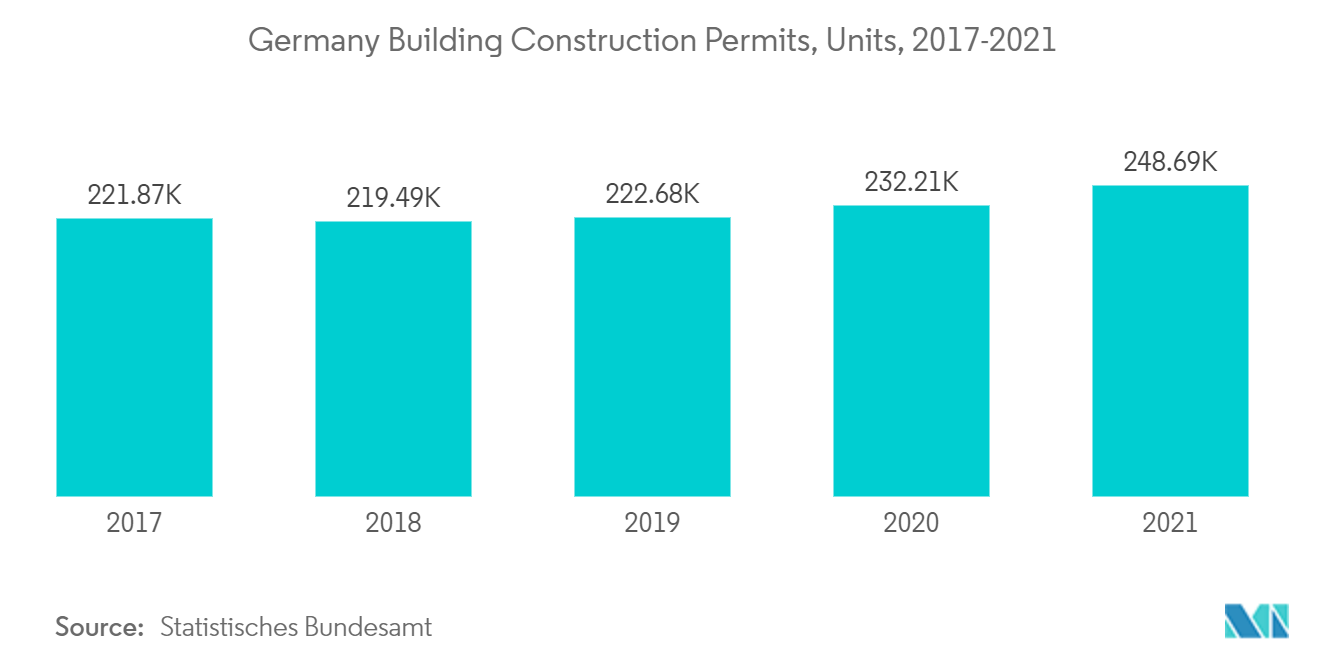Market Trends of Europe Isocyanates Industry
This section covers the major market trends shaping the Europe Isocyanates Market according to our research experts:
Building and Construction to Dominate the Market
- The demand for the isocyanate thermal insulation materials used in new constructions is anticipated to increase as the construction industry grows. The regional market is expected to be driven by the rising demand for new buildings in the United Kingdom, Germany, France, and Italy.
- The primary end-user market for isocyanates is the building and construction sector, which is employed in various domestic, industrial, and commercial settings. The use of rigid PU foam as wall and roof insulation, insulated panels, and gap fillers for the spaces around doors and windows is one of the most common applications of isocyanates.
- Zero-energy buildings (ZEB) are still the main market driver for PU, which drives the demand for isocyanates. The European Commission declared that all publicly owned structures would be ZEB over the next five years, and all new systems would be ZEB over the next eight years.
- The development of a 40-story residential tower and a 14-story office building at Albion Street in Central Manchester, with an expected completion date of 2024, was announced by the United Kingdom government in the third quarter of 2021. The Office for National Statistics (UK) reports that in 2021, the yearly production of the construction industry climbed by a record 12.7%.
- The market will develop because of rising government investment and demand for construction projects. For the Hermitage towers, which are to be finished in time for the 2024 Olympics, the French government approved the spending of approximately USD 3.3 billion.
- Overall, it is anticipated that the expanding need for buildings over the forecast period will drive the region's isocyanates market.

Germany to Dominate the Regional Market
- The need for isocyanates in Germany is increasing due to growing demand from the transportation, building, and aerospace industries. More than 6% of the world's automobiles and more than 12% of the world's aircraft are produced in Germany.
- Aliphatic isocyanates are present in automotive paints, including primers and sealer coatings. According to OICA, Germany is the world's largest automobile industry; as of the end of 2021, 33,08,692 vehicles were produced there. With more than 40 assembly and engine production facilities, Germany dominates the European automotive market and produces one-third of all the cars sold on the continent.
- Germany is the top exporter of automobiles in Europe, with over USD 125,000 million in exports, according to Eurostat. Germany accounted for more than 60.6% of all cars exported from the EU in 2021, increasing demand for isocyanate.
- Europe's largest construction market is in Germany. Due to an increase in the number of new residential construction projects, the construction sector is expanding. The demand for isocyanate PU foam for insulation is rising due to new construction. According to data from the Federal Statistical Office (Destatis), building completion work in Germany climbed 9.1% in the third quarter of 2021 compared to the third quarter of the previous year.
- To oversee its housing ambitions, the German government is establishing an altogether new ministry. From 2022 on, the government promises to build more than 400,000 new homes annually, 100,000 of which will be financed by the government.
- Germany is home to Europe's third-largest defense and aerospace market. The European defense market is expected to grow as a result of the anticipated increase in funding-NATO nations want to increase the defense budget by 2% of GDP. The manufacture of aircraft is one of Europe's key industries, and Germany is the continent's second-largest exporter of heavy aircraft.
- Considering all the above factors, Germany is predicted to dominate the European isocyanate market and has consistent expansion during the forecast period.


